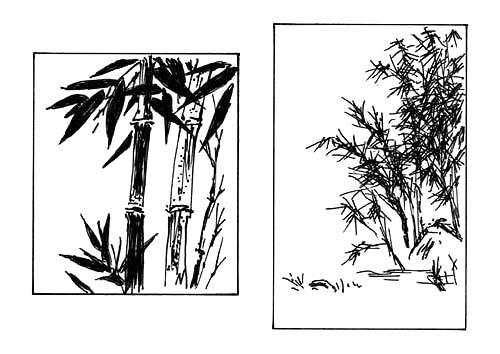|
||
 |
||

@
(C)2001 Japanese Architecture and Art Net Users System.@No reproduction or republication without written permission.
fÚÌeLXgEÊ^ECXgÈÇASÄÌRec̳f¡»E]ÚğֶܷB
|
||||||
| @ | ||||||
| bokuchiku@n| | ||||||
| KEY WORD :@art history / paintings | ||||||
| @ | ||||||
| Ch: mozhu. Painting of bamboo rendered in *sumi n ink. Bamboo exemplified Chinese literati taste in both theme and style. The bamboo, or junzi Nq (this gentleman), was the most beloved of all plants, according to educated Chinese. Yielding yet resilient, modest yet ever functional, faithfully holding its leaves through the winter, and hollow-hearted (a quality associated with Daoist and Buddhist ideas of emptiness), the bamboo symbolized the highest human virtues. Bamboo was depicted alone or as one element of the *shikunshi lNq (four gentlemen), and *saikan sanyuu ΦOF (three friends of the wintry seasons). The simplicity of the subject allowed the artist a high degree of creative freedom and latitude in technical skill. The techniques of ink bamboo painting typically were learned through the discipline of calligraphy. And like the distinctive hand of an experienced calligrapher, bamboo paintings served as an artist's self-portrait. The Northern Song literati-painters, Wen Tong (Jp: Bun Dou ¶¯; 1018-79) and Su Shi (Jp: So Shoku hçg; 1036-1101), are known as early practitioners of the genre. Paintings from the Yuan dynasty of ink-bamboo are of two types: naturalistic depictions of bamboo, often with rocks and blown by the wind, exemplified by the paintings of Tan Zhiru (Jp: Dan Shizui hÅ; late 13c-early 14c); and the more abstract or intellectualized bamboo depictions typified by the paintings of Li Kan (Jp: Ri Kan ; 1245-1320), and described and illustrated in his manual Zhupu Xianglu (Jp: CHIKUFU SHOUROKU |Ú^). The popularity of ink bamboo painting continued through the Ming and Qing dynasties. In Japan, artists began to create ink paintings of bamboo in the 14c. They often added sparrows such as those seen in the early 14c painting by Kaou Â¥ in the Yamato Bunkakan åa¶ØÙ, Nara and the mid 14c painting by Gukei ğk in Daijiji å, Kumamoto prefecture. Ink bamboo paintings gained wide popularity among literati painters of the Edo period. There are notable examples by Gion Nankai _ìC (1677-1751), Sakaki Hyakusen déSì (1697-1752), Ike no Taiga råë (1723-76), and Maruyama Oukyo ~R (1733-95). Artists such as Yanagisawa Kien öò½ (1704-58) even incorporated the Chinese character for bamboo into their artistic names. | ||||||
| @ | ||||||
 |
||||||
@ |
||||||
| REFERENCES: | ||||||
| @ | ||||||
| EXTERNAL LINKS: | ||||||
| @@ | ||||||
| NOTES: | ||||||
| @ | ||||||
(C)2001 Japanese Architecture and Art Net Users System.@No reproduction or republication without written permission. fÚÌeLXgEÊ^ECXgÈÇASÄÌRec̳f¡»E]ÚğֶܷB |
||||||
| @ |